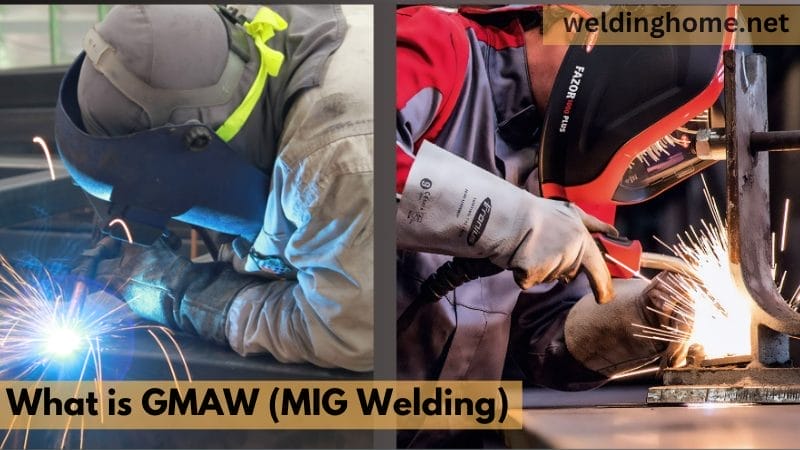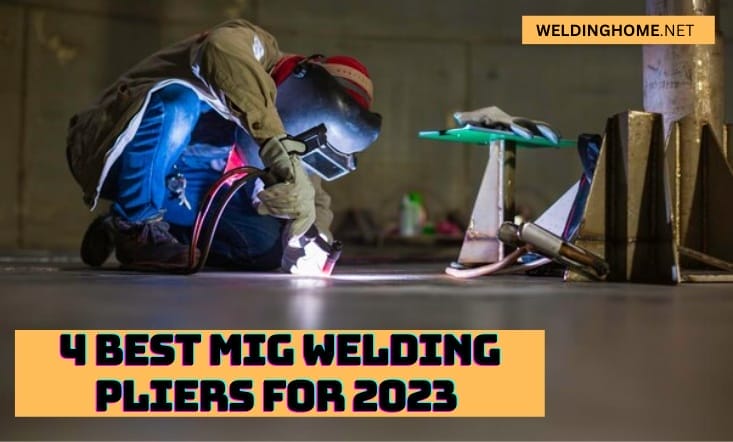MIG Welding Gas Pressure Settings: Achieving the Perfect Weld

Introduction
MIG welding, “Metal Inert Gas,” is a flexible and common way to work with metal and make things. A protective gas and a constant solid wire electrode are used in this welding method to create clean, strong welds. When it comes to the success of MIG welding, gas pressure sets are one of the most important ones.
Gas pressure is significant in MIG welding because it prevents harmful things from entering the metal pool. This shield keeps rust from happening and makes sure that the metal parts being joined stay together securely. Finding the correct gas pressure settings is hard because they change based on the type of gas used, the material’s thickness, and the welding wire’s width.
This in-depth guide will discuss how vital gas pressure levels are in MIG welding. I’ll talk about the things that affect these choices, show you how to find the right MIG Welding Gas Pressure Settings: Achieving the Perfect Weld step by step, and point out some mistakes you should never make. By the end of this article, you will fully understand the critical part gas pressure plays in making perfect MIG welds.
Importance of MIG Welding Gas Pressure
What is the significance of gas?
Using gas in MIG welding is of utmost importance, as it is crucial to safeguarding the weld pool from atmospheric impurities. The prevention of oxidation and the establishment of a robust and pristine link between the interconnected metal components is achieved. However, attaining the appropriate MIG Welding Gas Pressure is crucial for getting the best outcomes.
Factors Affecting Gas Pressure
Many factors may influence the pressure of a gas.
Other elements have an impact on the gas pressure settings.
Classification of Gas
The selection of the shielding gas is of utmost importance. Typical choices include argon, carbon dioxide, and a combination thereof. Various gases need distinct pressure settings to achieve optimal performance.
Material Thickness
The topic of discussion pertains to the measurement of material thickness.
The gas pressure needed for welding is influenced by the thickness of the material being joined. Applying more pressure when working with thicker materials may be necessary to provide enough shielding.
The topic of interest is welding wire.
Welding Wire
The MIG Welding Gas Pressure is influenced by both the diameter and kind of welding wire. Thinner wires often require reduced pressures, while bigger wires may necessitate higher settings.
Establishing Your Gas Regulator
It is essential to appropriately configure the gas regulator to get accurate control over MIG Welding Gas Pressure. Before commencing the welding process, verifying that the equipment is calibrated correctly and functioning optimally is essential.
Optimal Gas Pressure Settings

General Recommendations
For most mild steel MIG welding operations, it is generally recommended to use a gas pressure range of 20-25 cubic feet per hour (CFH).
The process of welding stainless steel materials
When engaging in activities involving stainless steel, it is advisable to use a somewhat elevated MIG Welding Gas Pressure ranging from 25 to 30 cubic feet per hour (CFH) to guarantee adequate shielding.
The process of aluminum welding
To account for the high heat conductivity of aluminum, it is often necessary to use more excellent gas flow rates during the welding process, usually ranging from 30 to 35 cubic feet per hour (CFH).
Adjusting the Gas Flow Rate

Here are tips for gas flow rate adjustment:
- Check your welding machine’s handbook before making any changes. It frequently specifies gas flow rate values depending on welding technique and materials.
- Always use gloves and a welding helmet while adjusting the gas flow rate.
- Find your welding machine’s gas regulator. Shielding gas flow is controlled by a knob or dial.
- Before altering the gas flow, switch off the welding equipment. Accidental arcing is avoided.
- The welding machine’s handbook recommends setting the gas flow rate to the original suggested amount. This begins your adjustments.
- Gradually adjust gas flow when welding waste material. Check the weld for gas coverage issues.
- Adjust the gas flow rate incrementally if you see spatter or porosity in your welds. Weld quality may alter dramatically with little modifications.
- Keep an eye on weld quality as you change the gas flow rate. A clean, uniform weld with few imperfections is desired.
- The best gas flow rate depends on the welding procedure, material, and wire diameter. Regular practice and experimentation will help you determine the right gas flow rate for welding.
Types of standard gas regulators
Each gauge of a standard gas regulator is briefly described:
Pressure Gauge:
A gas regulator’s pressure gauge shows system gas pressure. Stress is shown in PSI or bar depending on area and system requirements. This gauge helps welders and technicians adjust gas pressure for welding or cutting operations. Gas pressure is crucial for excellent welds and welding safety.
Flow Rate Gauge (Flowmeter):
The flow rate gauge (flowmeter) monitors and shows the shielding gas flow from the regulator to the welding flame or cutting equipment. Gas volume management during welding depends on this gauge. Welders may modify the flow rate to suit their method, materials, and torch. Welders may ensure shielding gas supply to avoid weld flaws and preserve pool integrity by monitoring flow rate.
These two gauges help welders and operators manage gas supply during welding and cutting, producing consistent, high-quality welds.
A Minimum Gas Supply Rate
The welding material and how the air moves around you affect the minimum protective gas flow rate.
Anything less than 20 CFH should not be used for aluminum. Conversely, a protective gas flow as low as 10 CFH is exemplary for soft steel.
When you weld outside, you should use a higher flow rate. But if you use the right stands to protect the joint, you can lower the needed protective gas flow rate.
Generally, you should use at least 10-15 CFH of gas flow. Even though the flow rate is so low, this doesn’t mean that your welds won’t get holes in them.
Say, if the joint is big and your trip speed and wire feeding speed are both fast, the weld might weaken because the protective gas isn’t covering it well enough.
Maximum Gas flow speed
High shielding gas flow may induce turbulence and contaminate molten metal. Hence, there is a limit.
Due to the venturi effect, air around the nozzle’s edge is sucked into the gas envelope at high gas flow rates. The MIG nozzle size determines the maximum flow rate.
We use shielding gas to protect the weld pool from air, which may degrade weld quality. The shielding gas loses its effectiveness when air interacts with it. Air pockets may cause porosity and weld weakness.
Common Mistakes to Avoid
- Ignoring manufacturing instructions might result in poor welds. Always use their recommended settings.
- Experimentation is vital, but make sure to correct the correction. Minor, steady improvements work better than abrupt ones.
- Since impurities might impact weld quality, use a pure shielding gas.
- Regularly check welding equipment for gas leaks. Leaks may damage gas flow and welds.
Conclusion
Finally, all welders must learn MIG welding gas pressure settings. The correct gas pressure produces clean, strong welds and reduces flaws in aluminum, mild steel, and other materials. I’ve examined how material, wire diameter, and welding location affect gas pressure settings. Refer to your welding machine’s handbook for specifics.
Gas regulator setup and flow rate adjustment are essential for consistent, high-quality welding. Safety comes first while making changes, using protective clothing, and working in well-ventilated environments. To minimize weld contamination, gas flow rates should not exceed a minimum, although high flow rates might cause turbulence and inadequate shielding.
Remember to consider the need for fine-tuning gas pressure settings for each welding operation. Practice, experimentation, and attention to detail will enable you to weld to your strict standards. Whether you’re a beginner or an expert welder, remember these tips—Master MIG welding gas pressure settings to create long-lasting, perfect welds.
FAQ’S
When I MIG weld, can I use any gas?
You can pick any shielding gas you want, but choosing the one recommended for your welding job is imperative.
Do I need to change the gas pressure for different metal layers?
Yes, the MIG Welding Gas Pressure depends on how thick the bonded metal is. Usually, higher pressures are needed for thicker materials.
What could happen if I forget to set the gas pressure?
Pay attention to the MIG Welding Gas Pressure settings to avoid a lousy weld with problems like cracks, sparks, and partial fusion.
Where can I find reliable welding machine manuals for guidance?
Typically, welding machine manuals are found on the manufacturer’s website or by contacting customer support. Always refer to the manual for specific recommendations.






